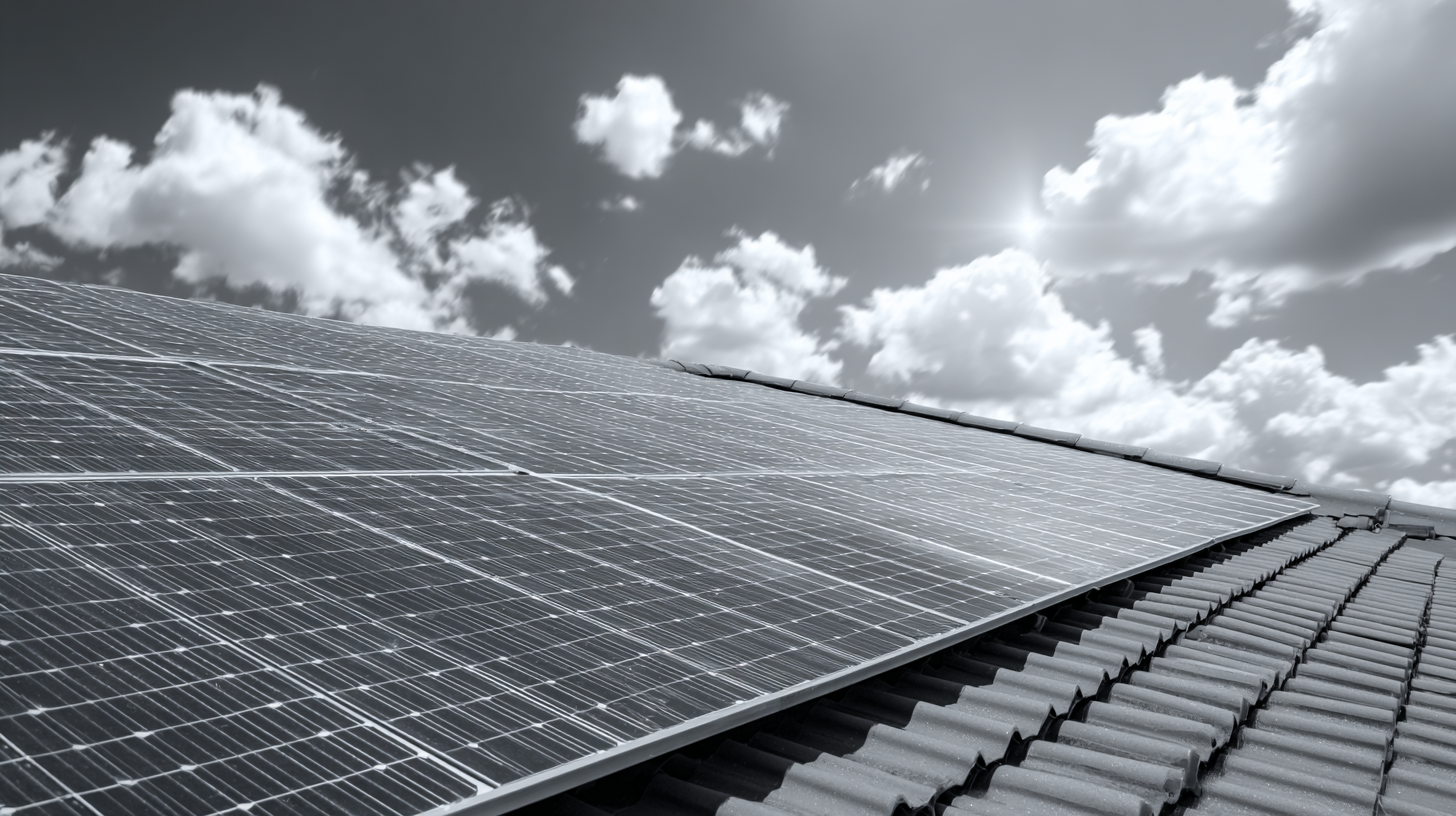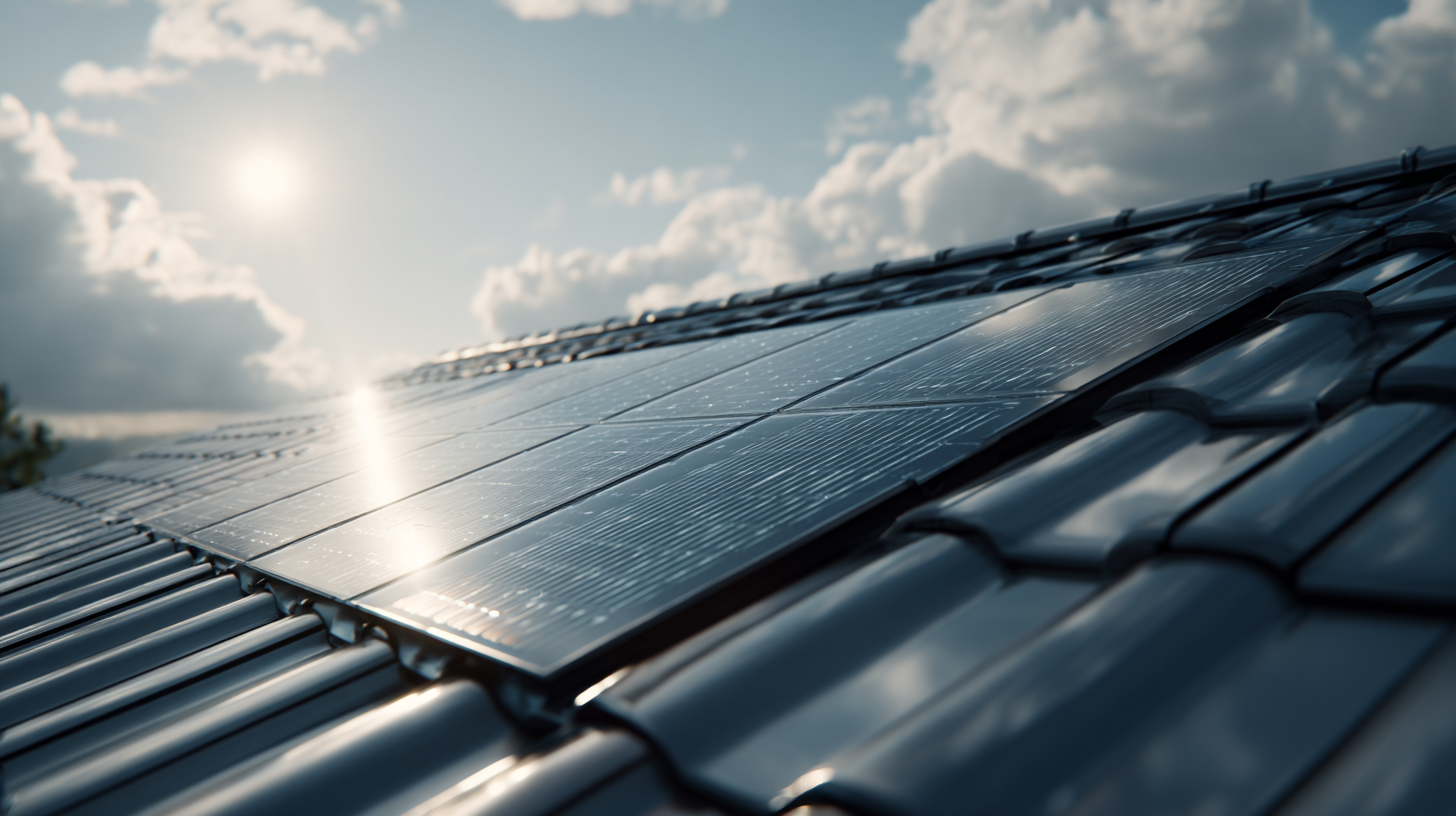Revolutionizing Energy Efficiency with Photovoltaic Roof Tiles and Their Impact on Future Sustainability
The advent of photovoltaic roof tiles marks a significant step towards enhancing energy efficiency and sustainability in modern architecture. These innovative tiles, which seamlessly integrate into traditional roofing materials, provide a dual function of protecting the home while harnessing solar energy. This transformative technology not only reduces reliance on conventional energy sources but also contributes to lower utility bills and a smaller carbon footprint. As communities increasingly prioritize sustainable living, understanding how to effectively implement and benefit from photovoltaic roof tiles becomes crucial. This guide will explore the myriad advantages these tiles offer, from their installation process to their long-term impact on energy consumption and environmental conservation, ultimately paving the way for a more sustainable future.

Harnessing Solar Energy: The Technology Behind Photovoltaic Roof Tiles
Photovoltaic roof tiles represent a significant advancement in harnessing solar energy, integrating seamlessly into building designs while providing functional benefits. Unlike traditional solar panels, these tiles blend aesthetics with sustainability, offering a sleek solution for homeowners who prioritize both energy efficiency and visual appeal. The technology behind these tiles involves the incorporation of photovoltaic cells directly into roofing materials, converting sunlight into electricity without compromising the building's architecture.
The efficiency of photovoltaic roof tiles lies in their ability to capture solar energy more effectively, even in low-light conditions. By utilizing innovative materials and cutting-edge manufacturing processes, these tiles can maximize energy output while maintaining durability. As the demand for renewable energy sources grows, the adoption of photovoltaic roof tiles not only enhances individual energy independence but also contributes to widespread environmental benefits, reducing reliance on fossil fuels and minimizing carbon footprints. This technology holds the promise of revolutionizing the energy landscape, paving the way for a more sustainable future.
Revolutionizing Energy Efficiency with Photovoltaic Roof Tiles and Their Impact on Future Sustainability
| Feature | Description | Efficiency (%) | Lifespan (Years) | Environmental Impact (CO2 Reduction kg/year) |
|---|---|---|---|---|
| Energy Conversion Efficiency | The ratio of electrical energy generated to solar energy received. | 15-20% | 25 | 500-800 |
| Aesthetic Appeal | Seamlessly integrates with traditional roofing materials. | N/A | N/A | N/A |
| Installation Versatility | Can be installed on various roof types and angles. | N/A | N/A | N/A |
| Maintenance | Requires minimal maintenance compared to traditional systems. | N/A | N/A | N/A |
Enhancing Aesthetics: The Design and Integration of Solar Roof Tiles in Modern Architecture
The integration of solar roof tiles in modern architecture represents a significant advancement in enhancing both aesthetics and functionality. Unlike traditional solar panels that can disrupt the visual appeal of a building, solar roof tiles are designed to blend seamlessly with roofing materials. These tiles come in various colors and styles, allowing architects and homeowners to maintain the desired look of their structures while harnessing solar energy. This dual functionality not only promotes energy efficiency but also supports sustainable design principles by encouraging the use of renewable resources.
Moreover, the adoption of solar roof tiles can transform the way we perceive energy-generating buildings. As architects prioritize sustainable practices, the challenge lies in making energy efficiency a visually appealing aspect of design. Solar tiles not only meet this challenge but also serve as a statement of innovation and environmental responsibility. The shift towards incorporating these tiles signifies a broader trend in architecture where beauty and sustainability coexist, encouraging a culture of eco-friendly design without compromising on style. As the technology continues to evolve, the potential for aesthetic advancements in solar roof tiles will further enhance their integration into contemporary architecture.
Impact of Solar Roof Tiles on Energy Efficiency
This chart illustrates the estimated energy savings achieved through the integration of photovoltaic roof tiles across various sectors, highlighting the significant potential for enhancing energy efficiency and contributing to sustainability in modern architecture.
Cost-Benefit Analysis: Evaluating the Economic Impact of Photovoltaic Roof Systems
The cost-benefit analysis of photovoltaic roof systems highlights their potential to significantly reduce long-term energy expenses for homeowners and businesses. Initial investments may be substantial, often deterring potential adopters. However, with advancements in technology resulting in lower manufacturing costs and increasing efficiency, the financial viability of these systems is improving. Incentives such as tax credits and rebates further enhance their appeal, allowing homeowners to recoup their initial costs within a few years.
Moreover, the economic impact extends beyond mere savings on energy bills. Photovoltaic roof tiles contribute to the decentralization of energy production, which can enhance local economies by creating jobs in manufacturing, installation, and maintenance. As communities transition to sustainable energy sources, they become less dependent on fossil fuels, mitigating fluctuations in energy prices. This alignment of environmental sustainability and economic stability suggests that investing in photovoltaic roof systems is not only a responsible choice but also a wise economic strategy for the future.

Sustainable Living: How Solar Roof Tiles Contribute to Eco-Friendly Housing
In recent years, solar roof tiles have emerged as a pivotal advancement in sustainable living, merging aesthetics with energy efficiency. According to a report by the International Energy Agency, solar energy contributed to nearly 26% of the global electricity generation in 2022, a figure that continues to grow as more homeowners opt for renewable energy solutions. Solar roof tiles not only produce clean energy but also enhance the thermal efficiency of residential buildings. Research indicates that homes equipped with photovoltaic tiles can reduce their energy bills by up to 50%, while simultaneously increasing property values by approximately 4% to 6%, showcasing their dual benefit as both an environmentally friendly and financially wise investment.
The transition to solar roof tiles signifies a shift towards eco-friendly housing, as these innovative products are designed to blend seamlessly with traditional roofing materials. This aesthetic appeal encourages wider adoption, making sustainable living more accessible. A study from the National Renewable Energy Laboratory reports that the integration of solar technology in roofing can lead to a reduction in carbon emissions by over 80% over the lifetime of the installation. As builders and homeowners alike embrace these advancements, photovoltaic roof tiles not only provide a cleaner energy option but also actively contribute to the overall sustainability of communities, demonstrating that modern architecture can harmoniously coexist with environmental responsibility.

Future Trends: Innovations in Solar Technology and Their Role in Energy Efficiency
The integration of photovoltaic (PV) roof tiles into buildings, as part of the Building-Integrated Photovoltaics (BIPV) market, signifies a pivotal trend in the future of energy efficiency and sustainability. With the global perovskite solar cell market projected to surge from $101.02 million in 2025 to $1.25592 billion by 2032, a compound annual growth rate of 43.34%, innovations in solar technology are set to play a critical role in transforming energy consumption patterns.
Tips: To maximize the benefits of BIPV installations, consider the orientation and slope of your roof. This can significantly enhance solar energy capture. Additionally, staying updated on governmental incentives for solar technology can provide financial advantages for homeowners and commercial builders alike.
As advancements continue to break through traditional efficiency barriers, we can expect further developments in energy-efficient technologies. Facilities integrating BIPV systems not only reduce their carbon footprint but also generate a renewable energy source, thus paving the way for a sustainable future. By embracing these innovative solutions, stakeholders can actively participate in the growth of a cleaner, greener energy landscape.
Tips: Regular maintenance of PV roof tiles is essential to ensure optimal performance. Clean the surfaces periodically, and consider professional inspections to identify potential issues before they escalate.
Related Posts
-

Understanding Issues with pv tiles in Modern Construction
-

The Future of Sustainable Living with Solar Roof Tiles
-

Innovative Solutions for Harnessing Energy with Photovoltaic Tiles
-

What Makes Solar Panel Tiles a Smart Choice for Sustainable Energy Solutions
-

Ultimate Guide to Harnessing Solar Power Tiles for Sustainable Energy Solutions
-

Ultimate Guide to Maximizing Energy Efficiency with Solar Thermal Panels in Your Home